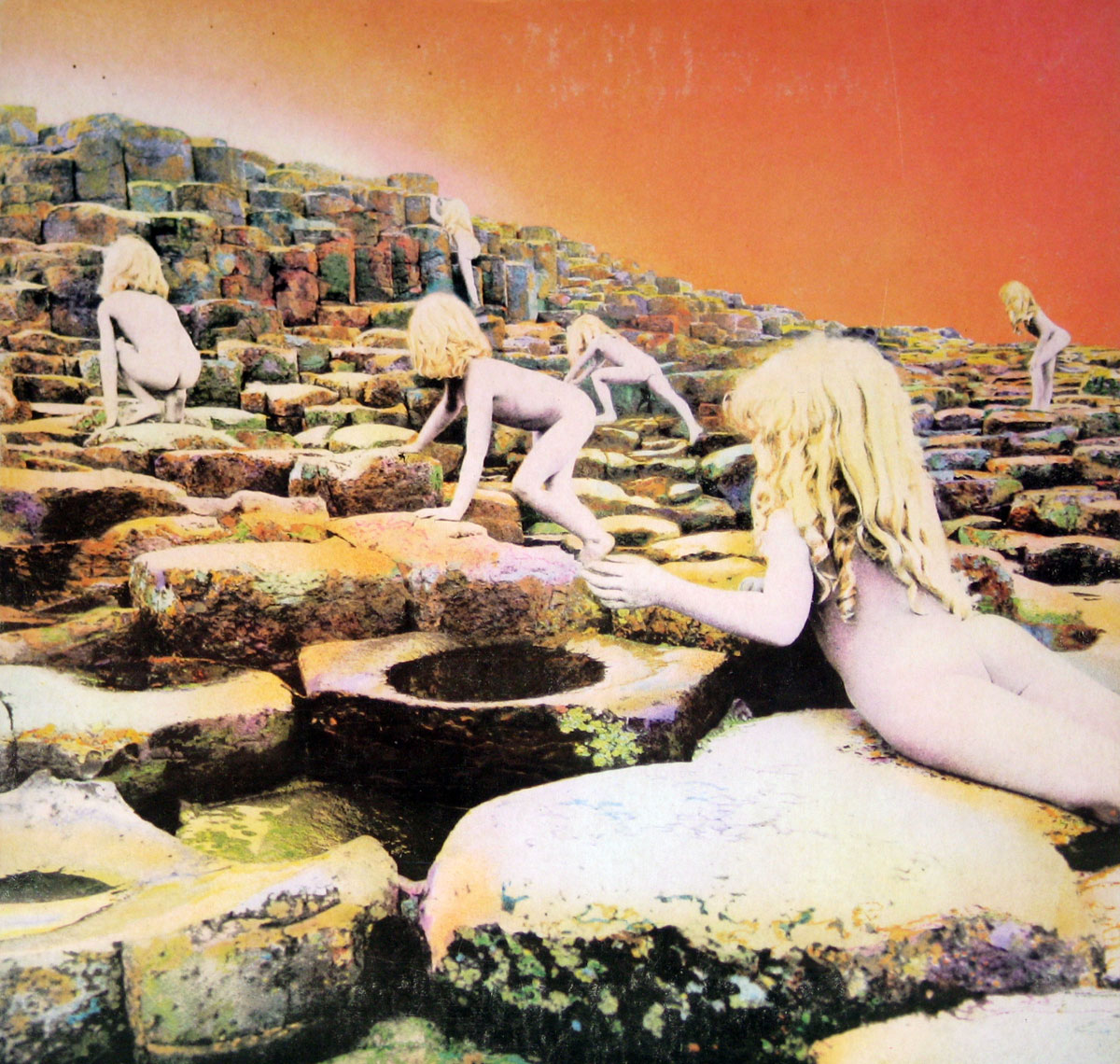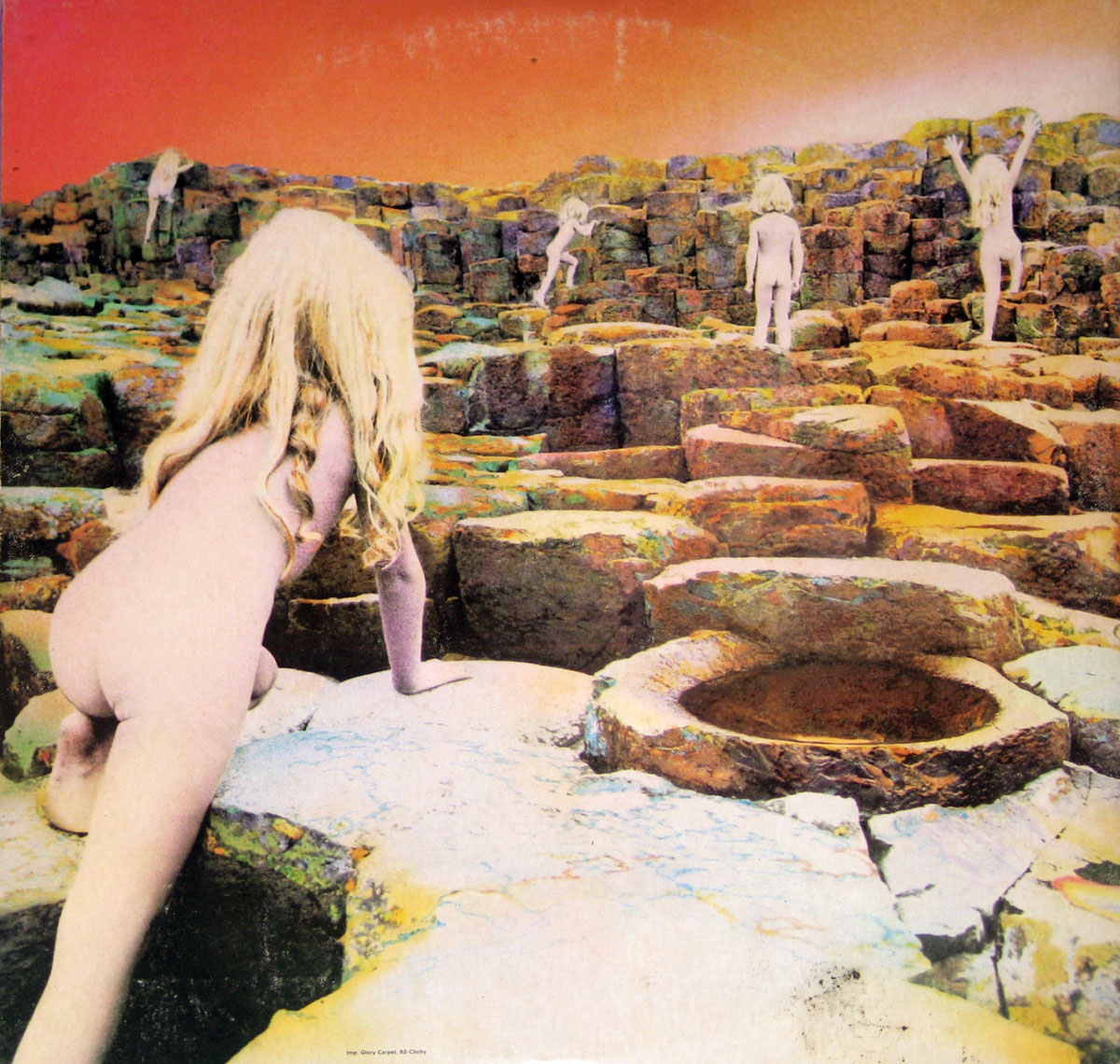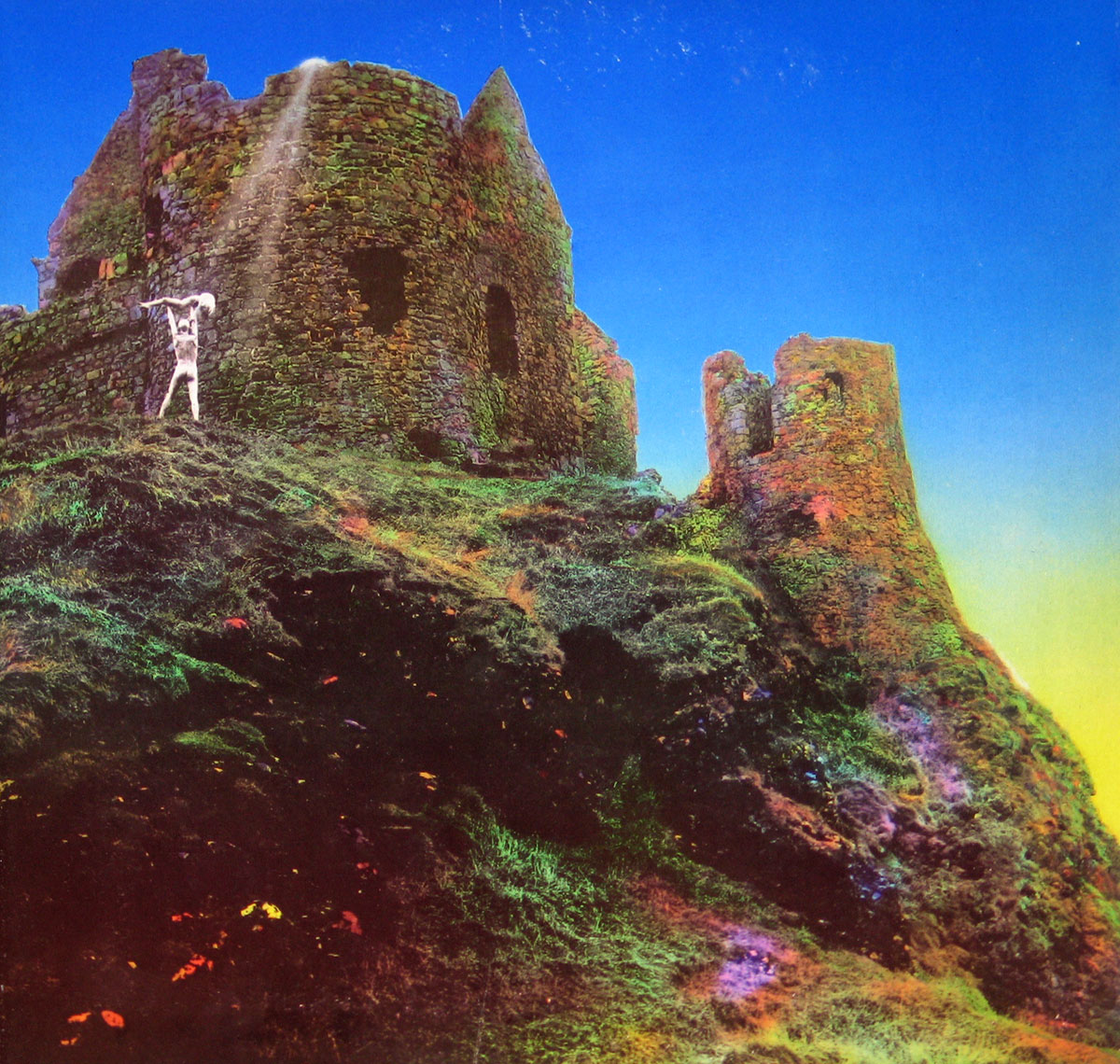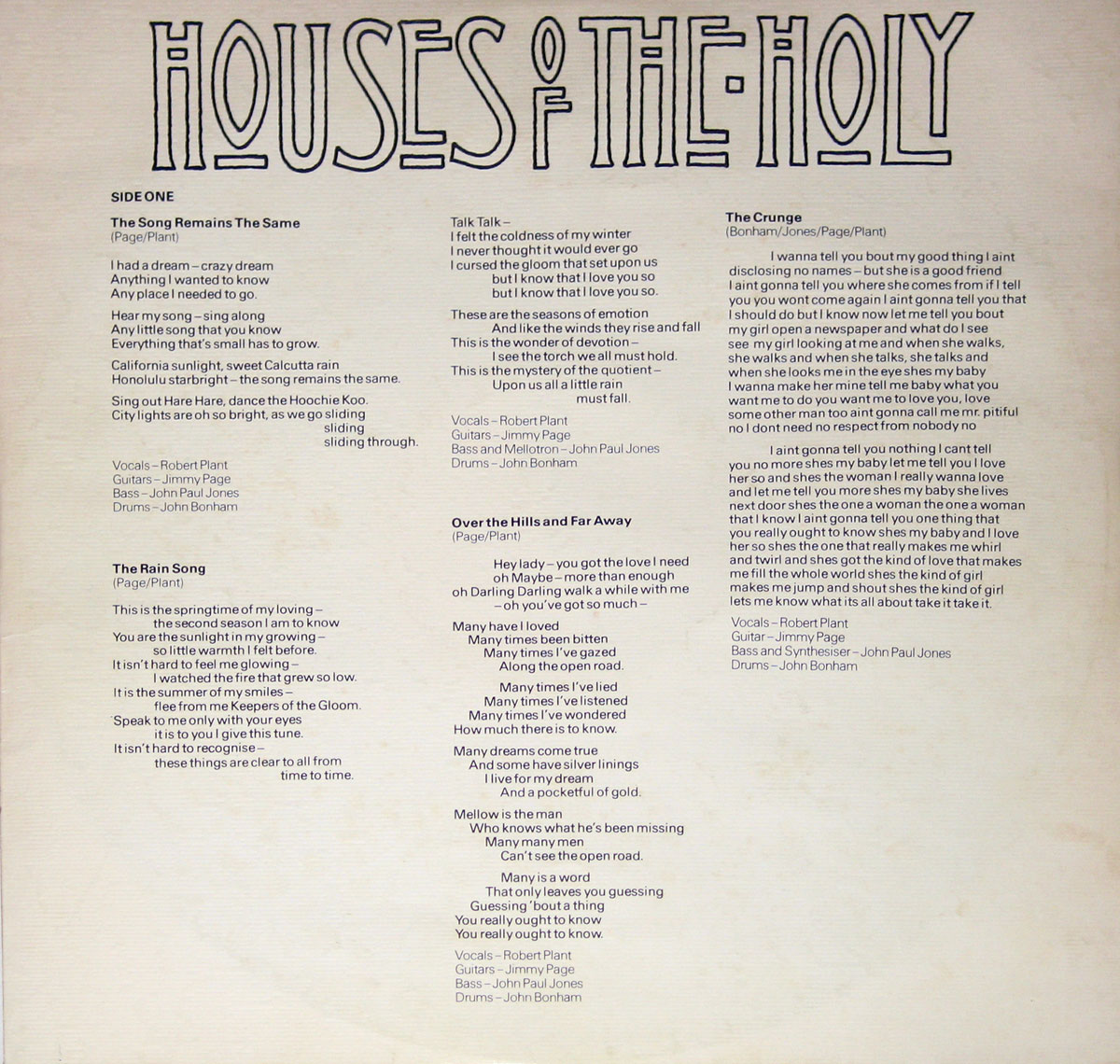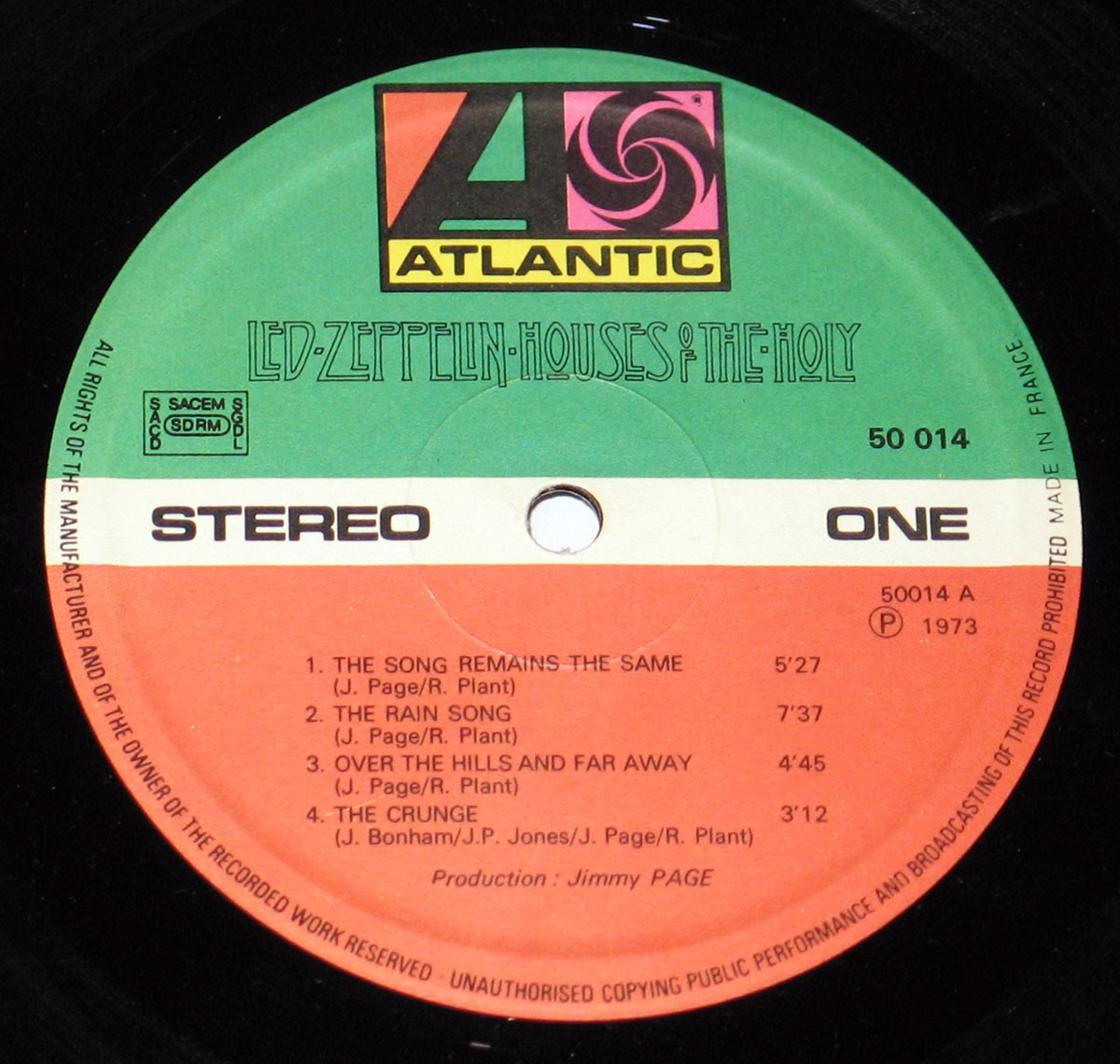"Houses of the Holy" (1973) Album Description:
Introduction:
"Houses of the Holy" hits like the moment Led Zeppelin stopped being just a band and started acting like a creative laboratory with its own sense of mischief. It’s a record made at their absolute peak yet determined to swerve every expectation. Drop the needle and it still opens a portal straight into the restless, luminous imagination of 1973.
Historical & Cultural Context
The early ’70s were a wild swirl of glam rock glitter, political noise, and bands pushing amps into forbidden territory. By 1973 Zeppelin were already global giants, but the real groundwork happened earlier: during 1972 sessions at places like Headley Grange, Stargroves, and Olympic Studios, where the band fused rock, folk, funk, orchestral textures, and whatever else they felt like stealing from the universe. They weren’t reacting to the decade — they were shaping it.
How the Band Arrived Here
After the massive success of their untitled fourth album, Zeppelin could have played it safe. Instead they dove deeper into experimentation. Jimmy Page approached the production like a sonic architect, John Paul Jones expanded the band’s harmonic reach through keys and arrangements, Bonham hammered grooves that felt half earthquake, half engine, and Plant stretched into new emotional colors. Reinvention wasn’t required — but they craved it.
The Sound & Songs
This album behaves like one big dare. The Song Remains the Same bursts forward in a frenetic guitar sprint before dissolving into the exquisite melancholy of The Rain Song. No Quarter sinks into a dark, dreamlike world sculpted by Jones’ keyboards, and The Ocean brings that chunky, live-wired swagger only Bonham could ignite. And yes, D’yer Mak’er is intentionally cheeky — Zeppelin poking fun at reggae and doo-wop, crafted knowingly, not a late-night accident.
Comparisons to the Era
While Black Sabbath were descending into the shadows with Vol. 4 and Deep Purple were tightening their machinery on Who Do We Think We Are, Zeppelin drifted into color, groove, and atmosphere. "Houses of the Holy" doesn’t follow the 1973 hard-rock playbook — it jumps genres, shifts moods, and refuses to stay in one box. Few bands dared this much stylistic risk on a single LP.
Controversies & Public Reactions
The album cover stirred more debate than the music. The Hipgnosis concept was real, but the myth of the photoshoot at Giant’s Causeway wasn’t — bad weather ruined that plan. The final artwork is a carefully assembled composite using photos of two children, heavily airbrushed by retoucher Richard Manning. Critics fussed; fans didn’t care. The album flew off shelves anyway.
Band Dynamics & Tension
Page’s production grip was firm, Jones quietly stitched the sonic world together, Bonham played like physics wasn’t real, and Plant pushed far beyond the band’s early blues origins. You can hear the creative friction — not destructive, but sparking in a way that powers invention.
Reception & Legacy
Critics didn’t know what to do with the genre-hopping at first, but fans embraced it immediately. Over time the album became a cornerstone of Zeppelin mythology — the moment their sound widened, brightened, and stretched into stranger territory. Even now it feels ready for liftoff every time the needle drops.
